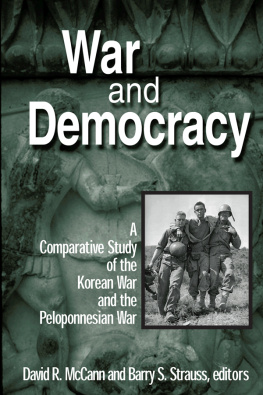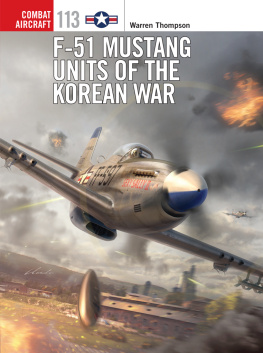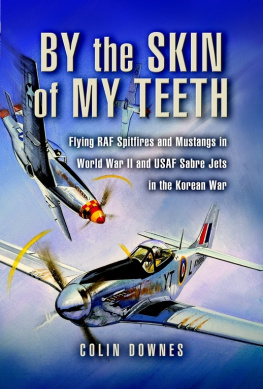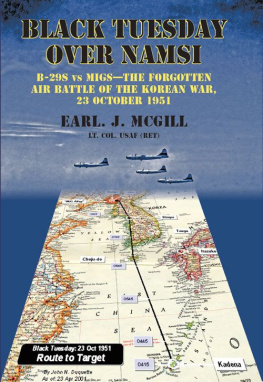This edition is published by PICKLE PARTNERS PUBLISHINGwww.picklepartnerspublishing.com
To join our mailing list for new titles or for issues with our books picklepublishing@gmail.com
Or on Facebook
Text originally published in 1965 under the same title.
Pickle Partners Publishing 2014, all rights reserved. No part of this publication may be reproduced, stored in a retrieval system or transmitted by any means, electrical, mechanical or otherwise without the written permission of the copyright holder.
Publishers Note
Although in most cases we have retained the Authors original spelling and grammar to authentically reproduce the work of the Author and the original intent of such material, some additional notes and clarifications have been added for the modern readers benefit.
We have also made every effort to include all maps and illustrations of the original edition the limitations of formatting do not allow of including larger maps, we will upload as many of these maps as possible.
A STUDY OF THE AERIAL INTERDICTION OF RAILWAYS DURING THE KOREAN WAR
by
FRANK J. MERRILL, Major, USAF
CHAPTER 1 General Introduction
For the past twenty-five years the United States has been actively involved in a war, hot or cold, that it can ill afford to lose. Our huge defense budget continues to demand a disproportionate share of our overall spending. Critics of this budget demand, and rightly so, that each of these dollars be spent in a manner that provides us with the best defense possible.
The duty of the military and civilian defense planners is to provide this best possible defense with the funds made available to them. Every aspect of military operations and equipment must be critically evaluated to insure that the cost versus defense effectiveness is within a reasonable degree of balance. One of the more costly items in the defense budget is the procurement and operation of combat aircraft. Recent trends have been towards a vast reduction in the active aircraft inventory, which indicates that wars of the future will be fought with far fewer air-craft sorties available for the accomplishment of the mission.
This air power limitation makes it mandatory that the operations planner critically review tactics and methods of air employment. The famous naval theorist, Alfred T. Mahan, evolved a theory concerning this facet of military operations and stated it in this manner: . the conduct of war changes rapidly with technological advances. Weapons advance faster than tactics and concepts of war for employing these weapons. Thus military systems always lag behind weapon capabilities. Undoubtedly science and technology have invalidated some current combat tactics and strategy. It is my purpose to study one tactic of air power employmentinterdiction.
Statement of the Problem
This study undertakes to examine the aerial interdiction activities conducted against the enemy railway system by United Nations forces during the Korean War, June 1950-July 1953. It has three major goals:
(1) To compile a brief but concise history of these interdiction activities.
(2) To evaluate the effectiveness of these efforts is it might relate to the conduct of the total war effort.
(3) To make recommendations pertaining to the future conduct of aerial interdiction.
Scope of study
This monograph will be restricted primarily to aerial interdiction of the enemy railroad system in Korea. Only general references will be made to other applications of air power and for administrative and logistical procedures required to support the employment of this power. It is recognized, also, that restricting this study to interdiction of railroads only also presents a problem. It will be difficult to eliminate all references to other types of aerial interdiction activities without some loss of clarity or understanding, however, these cross references will be held to a minimum.
Historical Development
Operations STRANGLE, the first major concentrated effort at modern aerial interdiction began in the Spring of 1944 during the Italian campaign. By December 1943, rugged mountain terrain, wretched weather and very stiff German resistance had halted the Allied ground campaign along the Gustav Line, just north of the Volturno and Sangio Rivers. {1} The first effort at breaking this ground stalemate was made January 22, 1944, with the amphibious assault on the beaches of Anzio. The beachhead was successfully established, but its establishment failed to relieve significant pressure on the Gustav Line. In fact, due to the heavy drain on air and ground resources required for the defense of Anzio, it soon become a liability to the overall effort. {2}
The failure to breakout at Anzio and the unsuccessful efforts of the U.S. Fifth Army to penetrate the Gustav Line renewed the idea previously proposed by General Eisenhower at the Cairo Conference in December 1943. He proposed using air power to disrupt the enemys logistical channels and lines of communication to an extent that would make it impossible for him to halt a major Allied ground offensive.
The use of air power in the role of interdiction had long been a major controversy among the Allied leaders of the offensive. Its critics argued that the limited tactical air power available should be used in close air support and/or other missions of a more immediate nature. On 19 March 1944, despite this strong opposition, MATAF (Mediterranean Allied Tactical Air Force) issued a directive for the interdiction program to begin. It was soon nicknamed Operations STRANGLE. {3} The stated mission of STRANGLE was to reduce the enemys flow of supplies to a level which will make it impracticable for him to maintain and operate his forces in Central Italy. {4}
Marshalling yards, repair facilities and railroad bridges were listed as first priority targets. All fighter-bomber units in the Mediterranean were given targets in the STRANGLE zone. This was an attempt at simultaneous interdiction, a phrase which meant that every line leading south from the Po Valley would be out simultaneously. Medium bomber units were to attack the marshalling yards and the heavier bridge complexes. {5} Fifteenth Air Force strategic bombers bombed rail yards in Northern Italy which were beyond the range of fighter aircraft. These targets proved highly lucrative due to the vast supplies and troops accumulated as a result of the destruction of rail lines and facilities in the south. {6}
Operation DIADEM, the Allied ground offensive, began on 12 May. It soon became apparent to the advancing Allied ground forces that STRANGLE had been a success. General Norstad in his report, The Assessment of Air Operations Against Enemy Communications; MATAF, Operations DIADEM, stated the following:









